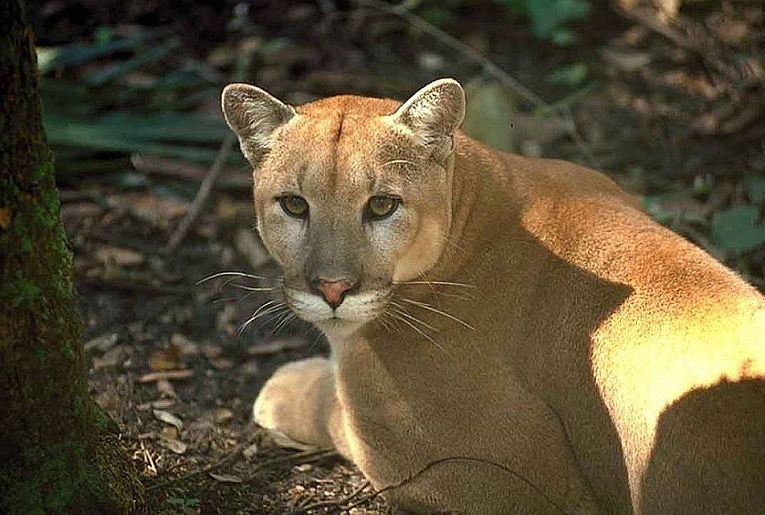cleaning up the Westas a prime top predator performing ecosystem services. Perhaps there is a step too far, if it is expected to operate in LA? Cougar image;
Credit: © Connie Bransilver/USFWS
The reduced population of mountain lions/pumas/cougars (so many names!) that became inbred in Florida are serving as guinea pigs for a similar urban situation around the Santa Monica Mountains in California. Los Angeles caters for many tastes but for large carnivores to live in the vicinity takes great stamina and survival technique. The factors involved could create an extinction threat, habitat extinction, or enforced inbreeding leading to the condition known as genetic inbreeding depression. And how green do locals want their Valley?
Of course, these conditions exist for many species, both plant and animal, where contact is lost with neighbouring populations. The interest in one species here is in how rare the situation is, the animal’s size and how much impact they could make on urban life if they adapted successfully. Models from this paper show that they are in fact at high risk of extinction even before any long term effect from inbreeding can take effect. Individual immigration and resultant gene flow was simulated to find out what could happen in the near future. The actual trapping of the pumas/cougars and subsequent monitoring was also integrated into the study. For example, in 2010, the sole immigrant found was responsible for a brief increase in the diversity and decrease in the inbreeding quotient. This soon reversed when he started breeding with his daughters however.
Mountains lions, like many cats find urban infrastructure represents significant barriers to, In Florida Puma concolor coryi (the actual specimen shown in our pic soon disappeared in the last century until only 20-30 animals remained. The remaining populations in California have the lowest level of genetic diversity except for the Florida remnant population, which has since been successfully interbred with novel individuals.
John F Benson and several fellow researchers from the universities of California, Wyoming and Utah State in the US, and the university of Cape Town, South Africa and the Santa Monica Mountains National Recreation Area in Thousand Oaks wrote their paper for The Proceedings of the Royal Society B and published today. Implications for any city that has an influx of wild creatures are pretty wide. From alien German raccoons and ferocious urban carnivores to tiny invasive creatures from the rainforest, we can draw conclusions here about control and survival.
We looked at the Peruvian situation with mountain lions in a paper that had condors being conserved by puma activity. Even more grist to the mill for trying to accommodate wild creatures, at least in a rural environment. And the greening of our urban situations could certainly include small felines, even if we baulk at the thought of a magnificent, graceful, subtle but powerful lion
near our city!










